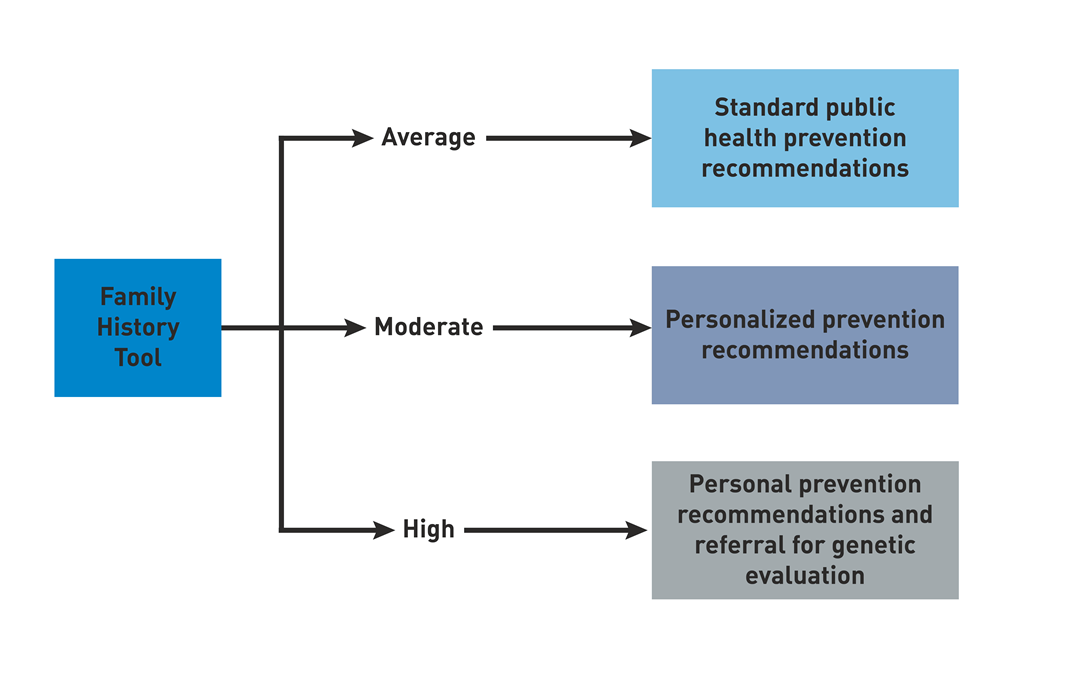Core Principles in Family History: Intervention
Identify where more specific information is needed and obtain records
Risk assessment is difficult if specific diagnoses or test results are not known. Additional information may be needed to rule out some possibilities and might be necessary to obtain other medical records (after obtaining permission for release) before further steps are taken with a patient.
Assess general risks
When taken with care, a patient’s family history can provide information needed to determine a general risk that he or she (or other relatives) may develop any number of disorders. A disease-specific risk assessment may assign a patient to an average, moderate, or high-risk group, with different health-management recommendations for each group (Scheuner et al., 1997). For example, management of high risk patients could include increased surveillance or prevention efforts. Other at-risk relatives may also be candidates for increased prevention, surveillance, and changes in management.
Know when to refer to genetic professionals
Primary care providers recognize and treat a wide range of general health problems. Although general familiarity with genetics is necessary for optimum patient care, it is not feasible for non-geneticists to be experts on all genetic disorders and genetic contributions to disease. The goals for those working in primary care are to:
- recognize when genetics may be contributing to disease in a family,
- take appropriate measures for management of disease in light of that information, and
- know when and how to refer a patient and/or other family members to genetics or other specialists as needed.
Genetic professionals include medical geneticists, genetic counselors, genetic nurses, and other health professionals with specialty training in clinical genetics. Genetic professionals can assist in
- the collection of a comprehensive or targeted family history,
- personal and family history risk assessment,
- identification of red flags,
- diagnosis of genetic disease,
- genetic testing,
- genetic counseling for genetic testing and genetic diagnosis, and
- addressing the psychosocial concerns that may arise in the testing and diagnosis process.
To locate a genetic professional in your area, visit the following organizations:
- National Society of Genetic Counselors (NSGC) - Click on “Find a Genetic Counselor”
- American College of Medical Genetics (ACMG) - Click on “Find Genetics Services” on the top right of screen
Encourage the patient to talk to other family members
When a patient has limited knowledge of the medical histories of family members, clinicians can improve the reliability of risk assessment by encouraging the patient to talk with relatives to gather additional information. In addition, if the provider suspects that there is an inherited disorder in the family, the patient can communicate that suspicion to relatives and encourage them to seek medical consultation for personal risk assessment.
Update the family history at subsequent visits
An advantage of organizing family history information in pedigree form is that it is easy to update during subsequent patient visits. Providers can add recent births, deaths, and new diagnoses to keep a patient’s family history current. Many providers will perform a comprehensive family history at the initial appointment and update the family history with targeted intake questions at subsequent appointments.
